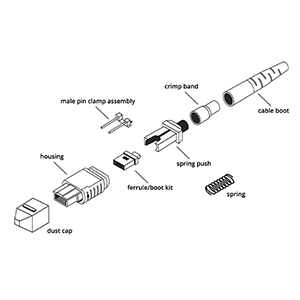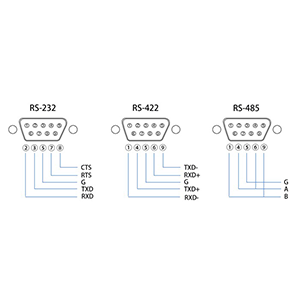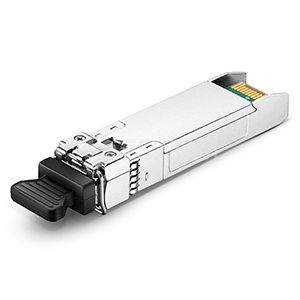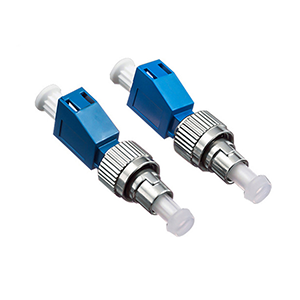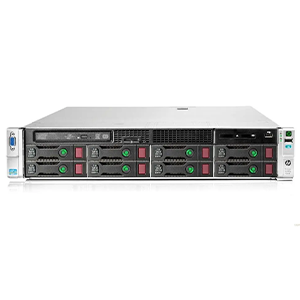In this article, I will give you an in-depth exploration of the advantages and broad application areas of MTP Fiber Connectors. We will introduce the definition, basic principles and differences of MTP Fiber Connectors from traditional fiber optic connectors. By understanding the advantages of MTP Connectors in terms of high-density connectivity and rapid deployment, simplified maintenance and management, high performance and low insertion loss, and multi-purpose applications, you will be able to realize why MTP Fiber Connectors are the ideal choice for different network needs . Let’s explore the excellent capabilities of MTP Connectors and the huge benefits they can bring to your network architecture!
What are MTP Fiber Connectors
MTP (Multi-Fiber Termination Push-on) fiber optic connector is a high-density fiber optic connector used in multi-fiber fiber optic systems. The following will explain the definition and basic principles of MTP fiber optic connectors, and introduce the differences from traditional fiber optic connectors. At the same time, the basic structure and characteristics of MTP fiber optic connectors are provided.
Definition and basic principles of MTP fiber optic connector:
- Definition: MTP optical fiber connector is an optical fiber connector based on MT (Mechanical Transfer) technology, used to achieve fast and reliable connection between multi-fiber optical fibers. It uses a special plug-in mechanism that can connect multiple fibers at the same time, providing a high-density fiber connection solution.
- Basic principle: MTP fiber optic connector uses multi-fiber ferrule technology, in which the fibers are arranged in a rectangular ferrule. The precise position and arrangement of the ferrules ensure precise alignment between fibers. With a push-in and pull-out plugging mechanism, MTP connectors can quickly connect and disconnect multiple fibers.
The difference between MTP Connectors and traditional fiber optic connectors:
- High-density connection: MTP connectors have a higher density than traditional fiber optic connectors and can connect more fibers in the same space. This makes MTP connectors suitable for applications requiring high fiber density, such as data centers, high-speed networks, etc.
- Quick connection: MTP connectors can connect multiple fibers with one plug-in and pull-out, which saves connection time and improves connection efficiency compared to the single-fiber plug-in and pull-out of traditional connectors.
- Precise alignment: MTP connectors use precise multi-core ferrule technology to ensure precise alignment between fibers. This reduces optical loss and signal attenuation during plugging and unplugging, improving connection reliability and performance.
- Consistency and interchangeability: MTP connectors have standardized designs and specifications, ensuring consistency and interchangeability between MTP connectors produced by different manufacturers. This makes the MTP connector more versatile and flexible, making it easy to use and replace between different systems and devices.
Overview of the advantages of MTP Fiber Connectors
MTP fiber optic connectors have significant advantages in high-density connections and rapid deployment. The following will explore these advantages and explain how MTP connectors achieve high port density through multi-core fiber design while emphasizing their rapid deployment capabilities in data centers and high-capacity network environments.
Advantages of high-density connections:
- Multi-core design: MTP connector adopts multi-core fiber design, in which multiple fibers are arranged in a ferrule. Compared with traditional single-core connectors, MTP connectors can connect more fibers in the same space to achieve high-density fiber connections. This provides great convenience for scenarios that require a large number of fiber connections, such as data centers and high-capacity networks.
- Space efficiency: Due to the high-density nature of MTP connectors, it can significantly reduce the required space and number of racks. This is critical for limited space environments such as data centers, which can effectively improve rack utilization and reduce physical space occupation.
Multi-core fiber design enables high port density:
- Ferrule structure: The ferrule in the MTP connector adopts a multi-core optical fiber design, in which multiple fibers are arranged in a rectangular ferrule. This design allows each connector to accommodate multiple fibers, allowing for high port density.
- Precise alignment: The ferrules of MTP connectors have precise position and arrangement to ensure precise alignment between fibers. This reduces the gaps between fibers, allowing connectors to be packed more closely, further increasing port density.
Quick deployment capabilities:
- High-speed connection: MTP connectors can connect multiple fibers through one plug-in and pull-out, which saves connection time and improves connection efficiency compared to the single-fiber plug-in and pull-out of traditional connectors. In data centers and high-capacity network environments where large numbers of fiber connections are required, MTP connectors can significantly speed up deployment.
- Simplified installation: The MTP connector adopts a push-in and pull-out plug-in mechanism, making the installation process simpler and faster. Reduce on-site connection time and labor costs with pre-assembled MTP fiber optic patch cords.
In summary, MTP fiber optic connectors have advantages in high-density connections and achieve high port density through multi-core fiber design. It can connect more fibers in the same space, improve rack utilization, and save physical space in limited-space environments. In addition, MTP connectors have rapid deployment capabilities, accelerating large-scale fiber deployment through high-speed connections and simplified installation processes. Therefore, in data centers and high-capacity network environments, MTP connectors are an efficient solution that can meet the needs of high-density connections and rapid deployment.
Simplified maintenance and management of MTP Connectors
MTP fiber optic connectors provide many benefits in terms of maintenance and management. These benefits are described below, explaining how MTP connectors reduce connection errors and troubleshooting time, and provide flexibility in network configuration and changes.
Benefits of maintenance and management:
- Quick identification and location: MTP connectors are often color-coded and numbered, allowing maintenance personnel to quickly identify and locate specific connections. This simplifies the maintenance process and reduces time spent troubleshooting.
- Standardized design: MTP connectors comply with standardized designs and specifications, ensuring consistency and interchangeability. This allows maintenance personnel to use standard tools and equipment for connection, testing and maintenance, reducing maintenance complexity and cost.
- Reliability and stability: MTP connectors use precise ferrule alignment technology to ensure precise alignment between fibers. This reduces optical loss and signal attenuation during plugging and unplugging, improves connection reliability and stability, and reduces the need for maintenance.
Reduce connection errors and troubleshooting time:
- Precise alignment: The MTP connector’s multi-core design and precise ferrule alignment technology reduce errors during connection. Precise alignment between fibers reduces the possibility of connection errors and increases connection success.
- Visual inspection: MTP connectors usually have a visual inspection window, allowing maintenance personnel to directly observe the connection status. This can quickly check whether the connection is correct and identify potential problems, reducing troubleshooting time.
- Quick replacement and repair: Due to the consistency and interchangeability of MTP connectors, when a failure occurs, the connector can be quickly replaced without complex rewiring. This reduces maintenance time and effort.
Flexibility for network configuration and changes:
- Pluggable design: MTP connector adopts pluggable design, making network configuration and changes more flexible. By replacing or reconnecting MTP patch cords, fiber optic connections can be quickly adjusted and reconfigured to suit different network needs.
- Modular components: MTP connectors are often used with modular components, such as MTP fiber optic boxes or MTP transfer modules. These modular components provide more flexibility and scalability, making the network configuration and change process simpler and more efficient.
To summarize, MTP fiber optic connectors offer many benefits in terms of maintenance and management. They quickly identify and locate connections, feature standardized designs and interchangeability, providing reliability and stability. In addition, MTP connectors reduce connection errors and troubleshooting time through precise alignment, visual inspection and quick replacement. In addition, the MTP connector’s pluggable design and modular components provide flexibility, making network configuration and changes more convenient and efficient. Therefore, MTP connector is a maintenance-simplified and management-optimized solution that is widely used in various network environments.
MTP Connectors high performance and low insertion loss
MTP fiber optic connectors have significant advantages in high performance and low insertion loss. The following will explore these advantages and explain how MTP connectors provide reliable signal transmission and low insertion loss, while emphasizing their importance in high-speed data transmission and long-distance transmission.
Performance and insertion loss advantages:
- Low insertion loss: MTP connectors use precise ferrule alignment technology and high-quality fiber materials to minimize insertion loss during connection. This ensures minimal signal attenuation during the connection process, maintaining high-quality signal transmission and reducing signal loss.
- Low reflection loss: MTP connectors reduce the reflection loss of optical signals by precisely controlling the geometry of the ferrule and the polishing quality of the fiber end. This helps avoid interference and attenuation caused by signal reflection and improves the reliability and stability of signal transmission.
- High-bandwidth support: MTP connector supports high-bandwidth optical fiber transmission, suitable for high-speed data transmission and high-capacity network environments. They are able to meet the needs of modern networks for high performance and high-speed transmission while maintaining signal integrity and quality.
Reliable signal transmission and low insertion loss:
- Precise ferrule alignment: The ferrules of MTP connectors are precisely designed and manufactured to ensure precise alignment between fibers. This reduces optical loss and signal attenuation during plugging and unplugging, providing reliable signal transmission.
- High-quality fiber optic materials: MTP connectors use high-quality fiber optic materials with low loss and high transmission efficiency. This ensures the quality of signal transmission in the fiber and reduces losses caused by the fiber itself.
- Polishing technology: The fiber end of the MTP connector is finely polished to ensure that the optical signal can be transmitted from one fiber to another in the best possible way. This reduces light scattering and reflection, lowering insertion loss and signal distortion.
The importance of high-speed data transmission and long-distance transmission:
- High-speed data transmission: The design and performance of MTP connectors make it very suitable for high-speed data transmission, such as Gigabit Ethernet, 10 Gigabit Ethernet, and Fiber Channel. They can support high-bandwidth and high-rate data transmission, maintain signal integrity and stability, and meet the needs of modern networks for high-speed data transmission.
- Long-distance transmission: MTP connectors play an important role in long-distance transmission. Due to its low insertion loss and reliable signal transmission characteristics, MTP connectors can maintain signal quality during fiber transmission and reduce attenuation and distortion of fiber transmission. This makes them suitable for applications that require fiber optic connections across long distances, such as across data centers, telecommunications and metropolitan area networks.
To sum up, MTP fiber optic connectors have advantages in high performance and low insertion loss. Through precise ferrule alignment and high-quality fiber optic materials, MTP connectors provide reliable signal transmission and low insertion loss. They are suitable for high-speed data transmission and long-distance transmission, meeting the needs of modern networks for high performance and high speed. In fiber optic connections, choosing high-quality MTP connectors is a key factor in ensuring signal quality and transmission reliability.
MTP Connectors multi-purpose application overview
MTP fiber optic connectors have a variety of application fields. Some of the main applications will be introduced below and their specific applications in scenarios such as data centers, telecommunications and wide area networks will be discussed. In addition, matters that need to be considered when configuring and deploying MTP connectors in different application scenarios will be provided.
Application areas:
- Data Center: MTP connectors are very common in data center applications. They are used to connect servers, storage devices, network equipment and fiber channels, etc., to provide high-capacity and high-speed data transmission in high-density optical fiber cabling environments.
- Telecommunications: MTP connectors are used in the telecommunications field for the deployment and maintenance of fiber optic networks. They are widely used in optical fiber access networks, optical fiber transmission networks and optical fiber backbone networks to support the transmission and distribution of services such as telephone, broadband and mobile communications.
- Wide Area Network: MTP connectors play an important role in the Wide Area Network (WAN). They are used to connect fiber optic links between different locations, enable long-distance data transmission and communication, and support wide-area network connections between enterprises and organizations.
Applications in different application scenarios:
- Data center: In data centers, MTP connectors are often used for high-density fiber optic cabling to connect servers and network equipment.. Since data centers often require a large number of connections and high-bandwidth data transmission, the high density, high performance and reliability of MTP connectors make them an ideal choice.
- Telecommunications: In the field of telecommunications, MTP connectors are widely used in optical fiber access networks, optical fiber transmission networks and optical fiber backbone networks. They are used to connect optical fiber transmission equipment, optical fiber distribution boxes and optical fiber distribution racks, etc., to realize the transmission and distribution of telephone, broadband and mobile communication services.
- Wide Area Network: In WAN, MTP connectors are used to connect optical fiber links between different locations to achieve long-distance data transmission. Since WANs often span long distances and have high transmission requirements, the low insertion loss and high performance characteristics of MTP connectors are crucial to maintaining signal quality and transmission efficiency.
Configuration and deployment considerations:
- Number of fiber cores: Different application scenarios may require different numbers of fiber cores. When configuring an MTP connector, the appropriate number of cores needs to be selected based on actual needs to meet connection needs and the possibility of future expansion.
- Fiber type: According to the application scenario and needs, select the appropriate fiber type, such as single-mode fiber or multi-mode fiber. Make sure the MTP connector matches the type of fiber being used.
- Environmental conditions: Consider the environmental conditions for deploying MTP connectors, such as temperature, humidity, dust and other factors. Choose connectors that meet environmental requirements to ensure performance and reliability.
- Fiber management: In a high-density fiber optic cabling environment, reasonable fiber management is crucial. Use appropriate fiber management systems and patch panels to ensure clean fiber placement and easy maintenance.
When configuring and deploying MTP connectors, considering these factors based on specific application scenarios and needs can ensure the performance, reliability, and applicability of the connector. Also, working with your vendor to understand their recommendations and best practices can help ensure that MTP connectors are configured and deployed correctly.
Overview:
Thank you for reading our blog! Through the discussion in this article, you will have a more comprehensive understanding of the advantages and wide application areas of MTP Fiber Connectors. MTP Fiber Connectors provide high-density connectivity and rapid deployment capabilities through their unique multi-core fiber design. You can easily achieve high port density to meet the connectivity needs in data centers and high-capacity network environments, saving space and deployment time.
We offer high-quality MTP Fiber Connectors products to meet your network connectivity needs. By choosing our products, you gain the benefits of high-density connectivity and rapid deployment, simplified maintenance and management, high performance and low insertion loss, and multi-purpose applications. If you have any needs or questions about MTP Connectors, our team is here to provide you with professional support.
MTP Fiber Connector FAQ
The main advantage of using MTP connectors is their high fiber density. They can accommodate up to 12, 24, or even 72 fibers in a single connector, reducing the number of connectors required and simplifying cabling infrastructure in high-density environments.
Traditional single-fiber connectors, such as SC or LC connectors, terminate and connect one fiber per connector. In contrast, MTP connectors have multiple fibers housed within a single connector, allowing for simultaneous connection of multiple fibers.
MTP connectors are commonly used in data centers, high-speed backbone networks, and telecommunications environments where high-density fiber connections are required. They are also used for fiber optic links in enterprise networks and for fiber-to-the-home (FTTH) installations.
MTP connectors are not directly compatible with single-fiber connectors like SC or LC connectors. However, hybrid cables or adapters can be used to convert between MTP and single-fiber connectors, enabling connectivity between different connector types.
MTP connectors have different polarity options to ensure proper fiber alignment and connectivity. The most common polarity types are Type A, Type B, and Type C, each defining a specific arrangement of fibers within the connector for effective communication.
MTP connectors are typically pre-terminated in a controlled manufacturing environment to ensure high-quality and reliable connections. However, field termination kits are available for certain MTP connector types, allowing limited field termination options.
An MTP trunk cable is a high-fiber-count cable with MTP connectors on both ends. It is used for interconnecting MTP-based systems, such as connecting switches, routers, or patch panels in data centers or telecommunications networks.
Yes, MTP connectors are available for both single-mode and multimode fiber types. The connectors and associated cables are designed to support the specific requirements of single-mode or multimode fiber applications.
MTP connectors are not backward compatible with older connector types, as they have different form factors and fiber arrangements. However, as mentioned before, hybrid cables or adapters can be used to facilitate connectivity between MTP and legacy connector types.

